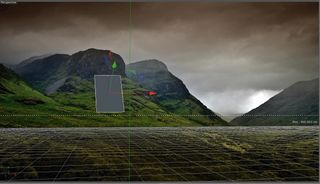Content strategy 101, Part 1: giving context to your content
In the first of a four-part series, Sandi Wassmer establishes a framework for content strategy
This article first appeared in issue 234 of .net magazine – the world's best-selling magazine for web designers and developers.
Content is defined in the Oxford English dictionary as “the things that are held or included in something”, which is more than a tad ambiguous – so it’s not surprising that interpretations of the word in the context of web design and development vary so widely.
If you ask 10 web designers or devs what content is and what role they play in its creation, you may get 10 different answers – ranging from “Content? What? I’m a designer not a copywriter” to “I’m glad you asked. Sit down and let me tell you about the importance of taxonomies and metadata management”. But they will all know one thing: the success of their site, web app, mobile app, or other platform that content is delivered on, relies on it.
Content, and why it isn’t optional
Put simply, content is anything that conveys information. It has many forms such as text, images, graphics, illustrations, icons, logos, buttons, audio, video, metadata and file downloads, to name a few, and unless it’s 1998 and your website is a single page of text-based static HTML, then content should be the centre of your universe – because it’s all you’ve got. When a website is broken down into its discrete elements, it’s all just content.
And it’s not just websites you’re creating content for – and long gone are the days when website copy was simply repurposed for use in mobile apps or social media. It’s now just one big, dynamic, mobile and interactive digital platform with one thing in common: content. Ignore it at your peril.
The digital media marketplace
The landscape for digital content is ever changing, so everyone involved in its creation needs to consider the different channels in which it will be distributed, the environments that people will be in when interacting with it and the multitude of devices that they will be using when doing so.
Within this varied landscape, for your website or app to be successful, meeting users’ needs alone will make for a very unbalanced brand relationship. So your content must also meet your site’s objectives – whether these are to sell a million rubber ducks or to get a hundred people to join your online petition. Of course this means your content has to be outstanding, but for it to do all of the things it needs to do for your users, your brand and your organisation, you must get strategic. Otherwise your content will be a tiny needle in a very large haystack.

Strategy and the creative process
Being strategic does not require a suit, a boardroom or any other metaphors you may conjure up. It’s about having purpose and, crucially, about having design goals aligned with those of other disciplines within your digital team and the wider marketing and business objectives of your organisation.
Playing an active part in the content process gives web designers context, and for those who find the design briefs they receive all too brief, content strategy provides structure and direction, which in turn will help clarify your design goals. For those of you who already have structure and direction, approaching content this way will ensure that your goals are aligned, but also provide the opportunity to learn and hone your skills.
Just like web design and development, content strategy has its process; it has rules that you follow, or know how to break properly, and it too is evolving at breakneck speed. Content strategy requires creativity, passion, a keen sense of judgement and plenty of tenacity, just like web design. Make friends with content. You will find you have a lot in common.
Content creation and design are interdependent, but in organisations that aren’t integrating content strategy into processes, they remain at loggerheads. In advertising and marketing the creative team model, which has art director and copywriter conceptualising together, is longstanding. Creative teams bring brands to life with consistent, cohesive messaging – but web design has not followed suit.
The internet was never intended to be the marketing tool it is today; it was born of a practical requirement by technically-minded folk and design was nowhere to be found. Designers then came along and gave it style, with marketers joining in once they realised what an incredible tool they had at their disposal. However, in web design, creative teams are multidisciplinary, a lot more flexible and have developers as part of their core.
From brand managers to developers, designers to copywriters, user experience folk to technical project managers to online marketers and more, all play pivotal roles in the life of your content.
In large organisations, content strategy is becoming an integral part of marketing and business strategy, with clear delineation of roles and responsibilities, but in smaller ones, content strategy, like many other aspects of web design, is shared among those involved in its delivery. However you slice it, thinking strategically is essential.
What will make your content great?

Great content has certain qualities and characteristics that have been identified as being essential in order to meet your website’s objectives and users’ needs. Although there is no disputing them, as technology evolves, these will change – some characteristics will exit, new ones arrive and their order of importance will move around. However, for now and for the foreseeable future, they should be your mantra. But if there is one characteristic that must be embedded in your brain, it’s ‘findable’ (see ‘In a word’, above right). If it isn’t findable, it can’t be anything else.
Content must be: findable; meaningful; useful; on-brand; memorable; usable; discoverable; on-message; timely; accessible; accurate; relevant.
If you’re thinking making this happen is the responsibility of a copywriter, then think again.
Copywriting is a major deliverable in the discipline of content strategy, but it is just that – a deliverable – and should not be mistaken for strategy. Still, without copywriters, users will have little to consume; even video content starts with copy. In whichever medium, copywriting is at the centre of getting a brand’s message across, but the best copy in the world can’t overcome poor technology, an inconsistent UI, garish iconography or an unattractive visual design.
Digital teams working in harmony
Content strategy is all about seeing your website as a whole, with everyone involved in its life working in collaboration and for the same purpose. Content strategy requires all of these to be successful:
Get the Creative Bloq Newsletter
Daily design news, reviews, how-tos and more, as picked by the editors.
- Engaging, informative and on-message copy
- Beautiful, welcoming and on-brand design
- Intuitive, straightforward, memorable interfaces
- Effortless, meaningful and accommodating UX
- Solid, consistent, yet malleable architecture
Development and creation

The creation, distribution and management of content involves all of the digital team at various stages in its life. For those fortunate enough to work for a forward-thinking organisation, content strategy and governance will be an integral part of business operations and will involve managers from other departments, not just those involved in its creation.
Content strategy has been viewed as a subset of user experience, but that’s just overcomplicating matters. They are both actually derivatives of traditional marketing communications disciplines and should reside in digital marketing, and be rooted in insight and understanding.
The more you understand your audience, the better you will be able to serve them. Being a part of content strategy gives you the space and time to learn, think and plan, so that your content can do its job. Content strategy must be at the heart of your design and development process.
The content life cycle
The stages in the content life cycle may not always be discrete and your content may not always stick to a strict calendar, but your content will always have a beginning, a middle and an end; this process is the content life cycle.
Sometimes stages merge, sometimes they expand, and sometimes you may not have all the resources you want or need and you will have to make some difficult decisions. But the content life cycle just keeps on moving and goes like this: Learn; Analyse; Report; Think; Plan; Create; Distribute; Manage; Monitor; Measure; Evaluate.
The content life cycle provides a great framework but participating in content strategy is not just about joining in and throwing your content into the mix. All of the different content elements are interdependent and interconnected, with great structure and information architecture maturing nicely.
Next month: Bridging the gap from data to meaningful information
Content strategy 101
Part one: Giving context to your content
Part two: Making data meaningful
Part three: Put knowledge into action
Part four: Bringing your content to life
Mobile website design: discover 20 pro tips at Creative Bloq.

Thank you for reading 5 articles this month* Join now for unlimited access
Enjoy your first month for just £1 / $1 / €1
*Read 5 free articles per month without a subscription

Join now for unlimited access
Try first month for just £1 / $1 / €1
The Creative Bloq team is made up of a group of design fans, and has changed and evolved since Creative Bloq began back in 2012. The current website team consists of eight full-time members of staff: Editor Georgia Coggan, Deputy Editor Rosie Hilder, Ecommerce Editor Beren Neale, Senior News Editor Daniel Piper, Editor, Digital Art and 3D Ian Dean, Tech Reviews Editor Erlingur Einarsson and Ecommerce Writer Beth Nicholls and Staff Writer Natalie Fear, as well as a roster of freelancers from around the world. The 3D World and ImagineFX magazine teams also pitch in, ensuring that content from 3D World and ImagineFX is represented on Creative Bloq.
